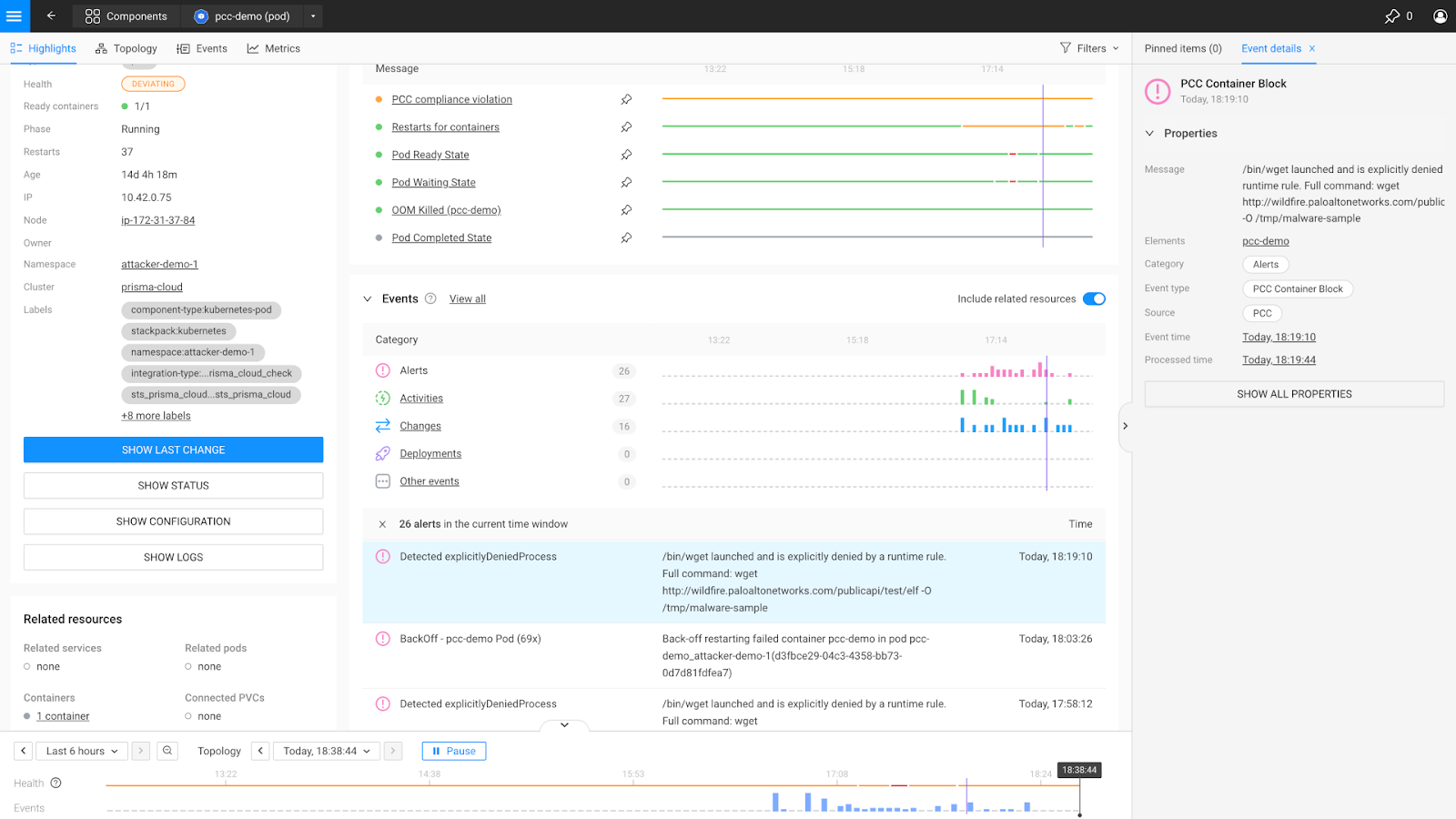Many companies are using cloud technologies to become more agile, scalable, and cost-effective during their digital transformation. However, this change brings new challenges in maintaining the security and performance of applications and infrastructure in the cloud.
Security and observability go hand-in-hand. Cloud security focuses on protecting data, applications, and infrastructures from threats, while observability enables teams to monitor systems, understand their state, and troubleshoot issues effectively.
Still, there are a number of challenges faced by Security and Site Reliability Engineering (SRE) teams in the cloud environment. Today, we're going to look at the importance of merging cloud security and full stack observability data to enhance the effectiveness of cloud management in your organization.
Challenges in Cloud Security and Observability
Depending on your digital infrastructure, you may encounter a range of challenges impacting security and observability, spanning from safeguarding sensitive data in virtual environments to ensuring seamless visibility in complex cloud architectures.
For the purposes of this blog, let's explore the four primary categories of obstacles faced by organizations aiming to uphold strong security measures and practice more effective observability in the cloud.
Staff Shortage: Security and SRE teams frequently grapple with substantial resource constraints, often adhering to a common 1:10 ratio, where one engineer is responsible for every ten developers. This imbalance leads to increased pressure on the available staff and can impact the quality of security and reliability measures.
Blind Spots in Observability: A notable number of professionals acknowledge that their existing tools create — or contribute to — observability blind spots. Specifically, 70% of security teams encounter this challenge, while 76% of developers grapple with limited access to essential observability data, mostly due to the limitations of point products.
Delayed Response Times: The time taken to resolve critical alerts is alarmingly high, averaging 145 hours for security teams. Similarly, SRE teams typically spend between 1 to 12 hours addressing critical outages. As you can imagine, these delays are detrimental to both system integrity and operational efficiency.
Security and Observability Tools are Increasingly Complex: The market is saturated with multiple-point products for security and observability, each boasting specific features but often falling short of providing comprehensive coverage. This fragmentation of tools adds to the complexity, making it challenging for teams to share a cohesive view of their cloud environment — or efficiently manage it.
How to unify cloud security and observability
To bring together cloud security and observability, think about using all-in-one platforms and standardized protocols to bridge the gap between security measures and real-time visibility. By adopting unified solutions, teams can streamline workflows, enhance collaboration between security and observability teams, and ultimately fortify the resilience and efficiency of their cloud environments. Here are three paths to take:
1 - View the Application Lifecycle in a Graph
A graphical representation of the application lifecycle can reveal risks at every stage and trace production issues back to their source code. This visualization helps users grasp how different components are interconnected and understand their influence on the overall integrity of the system.
2 - Unified Troubleshooting and Remediation
The ability to trace production risks and issues back to the source code from a unified interface reduces friction between security and development teams. This integration not only enhances security measures, it also helps protect applications with the appropriate controls and safeguards.

3 - Integrate Guidance
You’ll want to make sure that the data is viewed and that remediation guides (aka run-books) are included to help users solve any emerging issue. This reduces the necessity for manual troubleshooting when experiencing security, performance, or reliability issues.
Let’s talk business benefits
What advantages does adopting a unified approach to observability and cloud security bring to the business?
You’ll empower platform engineers by shifting focus towards innovation and platform development rather than on troubleshooting.
You’ll bridge technical and business impact by rapidly evaluating issues to determine their impact on both technical functionality and overall business objectives.
You’ll accelerate feature development by drastically reducing the Mean Time to Repair (MTTR), saving costs and prioritizing value-added features.
You’ll minimize your engineer’s cognitive load by substantially reducing resolution times and lightening the workload for your engineering teams.
Take the next steps towards unifying your cloud security and observability practice
Ensuring the integration of security and full stack observability in the cloud is essential for modern organizations. A unified, user-friendly interface that combines these elements holds the potential to significantly improve the efficiency and effectiveness of cloud operations.
To better understand and address the issues covered above, consider using StackState along with Prisma Cloud . This combination offers a unified view of your entire environment, including security and observability signals — and the insights you'll derive — allowing you to concentrate on innovation instead of building and managing your own observability and security stack.
To get started, take StackState for a test run . Or try us out by exploring our playground !
To learn more, watch our on-demand webinar, “Cloud security and observability: When integrity and availability meet .”



